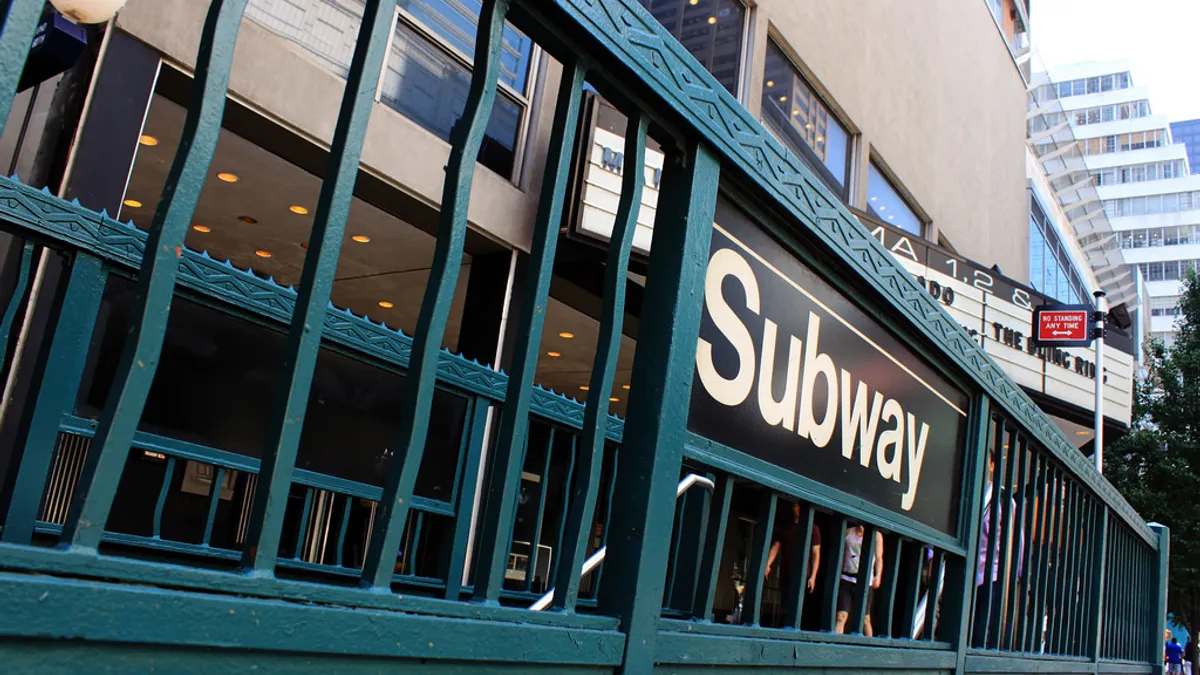Dive Brief:
- New York City is beefing up its outreach for homeless people who use the subway system as shelter through its Homeless Outreach & Mobile Engagement Street Action Teams (HOME-STAT) initiative. The goal is to get more people to accept social services and transition out of the subways.
- The three-pronged approach includes numerous agencies and the following actions:
- Create an interagency command center — Subject matter experts from multiple agencies will come together at the Joint Crisis Coordination Center to develop catered approaches to engage individuals based on their needs in the most challenging cases. Partners include the Department of Health and Mental Hygiene and Health + Hospitals.
- Increase outreach operations — The New York Police Department (NYPD) and the Department of Homeless Services will work with the Metropolitan Transportation Authority (MTA) and New York City Transit to bring a coordinated approach to outreach at end-of-the-line stations. Police will accompany HOME-STAT outreach teams as they canvas the transit system to offer shelter and support to homeless individuals.
- Share live camera feeds — NYPD will work with partners to provide access to live transit bureau CCTV feeds. Once these are built, agencies at the new Joint Crisis Coordination Center can monitor the transit network in real time and deploy HOME-STAT outreach quickly in response to real-time conditions.
- The NYPD will also expand the Subway Diversion Project launched in June. Under the initiative, unsheltered people in the subway who commit low-level, non-violent offenses are offered shelter and other support instead of citations and court summonses.
Dive Insight:
HOME-STAT has helped more than 2,200 citizens transition off the streets since it launched three years ago. Citizens can contact 311 if they see an unsheltered person who might be in need of assistance.
"With this collaborative partnership, we're striking the right balance, and meeting New Yorkers in need where they are to ensure they're connected with services to help them back on their feet," Mayor Bill de Blasio said in a statement.
The initiatives are designed to get shelter and other supportive services to individuals experiencing homelessness, even if they have repeatedly refused those services in the past. The city's statements about the homeless solutions repeatedly reference efforts to get homeless people to "accept services."
Unsheltered individuals who do not accept services have a variety of reasons for refusing help. They might have had a bad experience in the past or don't feel safe in a shelter. They might also have restrictions like substance dependency, mental health disorders, animals or non-traditional family structures that prevent them from using shelters with strict entry guidelines.
There's a pervasive debate across the globe about how to handle people experiencing homelessness who use public transit as shelter. On one side of the debate, police and city leaders receive complaints from the public if homeless individuals cause unhygienic conditions or legitimate safety concerns. On the other side, homeless people who are not committing a crime have the right to occupy space in the transit system.
Cities are trying different approaches to get people out of transit systems and into appropriate housing, where they can access resources such as running water, restrooms and social services. Authorities in the Twin Cities launched the Homeless Action Team (HAT) last year. The team of transit police are trained as outreach officers.
And due to the city recently canceling overnight light rail service, which will displace homeless people who used the system for shelter, they're work is especially needed. HAT and its partners have helped 42 families — more than 100 people — get into housing during its nearly one year in existence.












